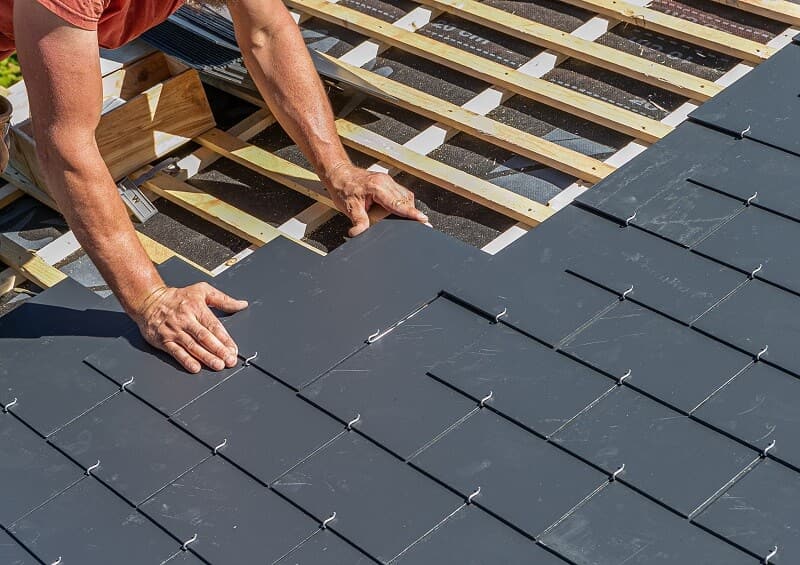Roof installation is a significant home improvement project that requires careful planning and consideration of various factors. One critical factor that often goes unnoticed is the temperature at which the installation takes place. The ideal temperature for roof installation can significantly impact the quality and longevity of the roofing materials. In this article, we’ll explore the importance of temperature during roof installation and discuss the optimal conditions for a successful project.

Understanding the Role of Temperature in Roof Installation
1. Shingle Installation*
Most residential roofs in North America are covered with asphalt shingles. These shingles are particularly sensitive to temperature during installation. Temperature affects the flexibility and sealing ability of the shingles, making it a crucial factor to consider.
2. Adhesive and Sealant Activation*
During installation, adhesive strips on the back of shingles need to activate to ensure proper sealing and adhesion. Temperature plays a pivotal role in this process. If it’s too cold, the adhesive may not activate correctly, leading to potential issues like shingle blow-offs in high winds.
3. Shingle Flexibility*
Temperature also impacts the flexibility of shingles. In colder weather, shingles can become brittle and may crack or break when nailed down. In contrast, excessive heat can make shingles soft and more susceptible to damage during installation.
The Ideal Temperature Range for Roof Installation
1. Moderate Temperatures*
The ideal temperature range for roof installation is generally between 45°F (7°C) and 85°F (29°C). Within this range, asphalt shingles are more likely to perform optimally. In moderate temperatures, the adhesive strips on the shingles can activate effectively, ensuring proper sealing and adhesion.
2. Avoid Extreme Cold or Heat*
It’s essential to avoid installing a roof during extreme cold or hot weather. In extremely cold conditions, shingles may not adhere correctly, and the risk of breakage increases. In scorching heat, shingles can become too soft, making them more susceptible to damage during installation.
Considerations for Winter Roof Installation
Sometimes, roofing projects cannot be postponed, even during the winter months. In such cases, certain precautions can be taken to ensure a successful installation:
1. Use Specialty Adhesives*
Roofing professionals often use specialty adhesives designed for cold weather installation. These adhesives are formulated to activate at lower temperatures, ensuring proper shingle adhesion.
2. Hand Sealing*
Hand sealing is a technique where roofers manually seal the shingle tabs with roofing cement or adhesive in cold weather. This extra step helps compensate for the lower adhesive activation temperatures.
3. Thermal Sealing*
Some modern asphalt shingles have self-sealing technology that activates at lower temperatures. These shingles can be used for winter installations and provide better adhesion.
Considerations for Summer Roof Installation
During the hot summer months, here are some considerations for a successful roof installation:
1. Early Morning or Late Evening Installation*
Roofing professionals may choose to work during the cooler parts of the day, such as early morning or late evening, to avoid the extreme heat. This can help prevent shingles from becoming too soft during installation.
2. Proper Ventilation*
Proper attic ventilation is essential in hot weather to prevent heat buildup in the attic, which can affect the performance of the roofing materials.
Conclusion
The ideal temperature for roof installation is a critical factor that should not be overlooked. Installing a roof in the right temperature range ensures the correct activation of adhesive strips, proper shingle sealing, and a longer lifespan for your roofing materials. Whether you’re planning a roof installation in cold winter months or scorching summer heat, understanding the temperature considerations and taking appropriate precautions can help you achieve a successful and long-lasting roofing project. Always consult with a professional roofing contractor who is experienced in working under various weather conditions to ensure the best results for your roof installation.



Leave a Reply